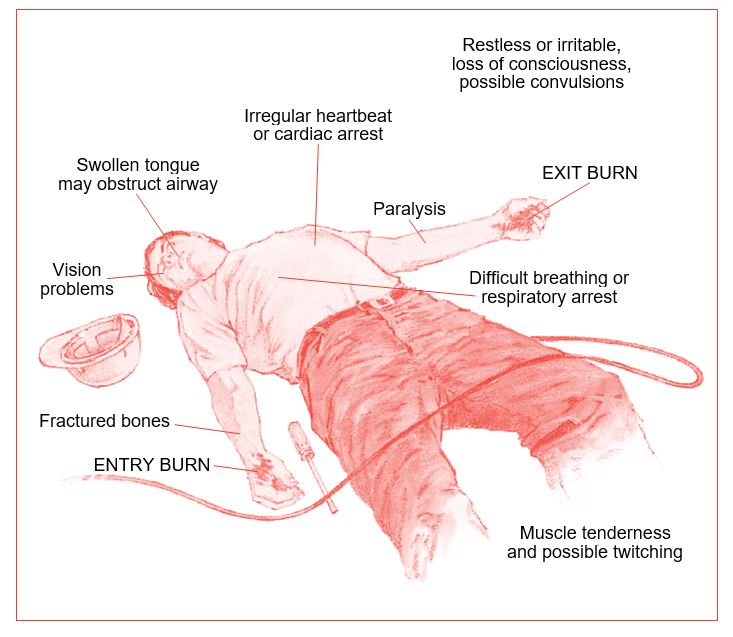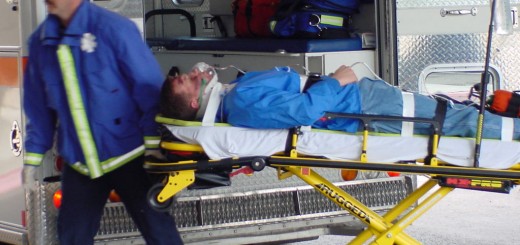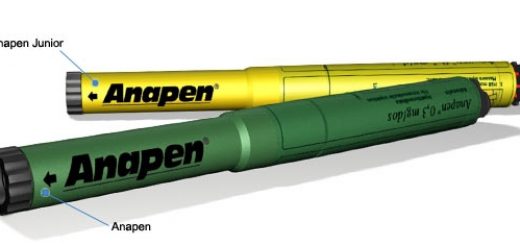First Aid for Electrical Injuries
In cases of electrical burns, damage is caused by electricity entering the body and traveling through the tissues. Injury results from the effects of the electricity on the function of the body organs and from the heat generated by the passage of the current.
Extremities are at risk for more significant tissue damage, versus the torso, because their small size results in higher local current density.
The factors that determine the severity of electrical injury include the following:
- Type and amount of current (alternating versus direct current and also the voltage)
- Path of the current through the body
- Duration of contact with the current source
The most serious and immediate injury that results from electrical contact is cardiac arrhythmias (abnormal heart rhythms). Any patient who receives an electrical current injury, regardless of how stable they are, should be assessed by a medical professional with a period of observation.
The most common life-threatening arrhythmias are ventricular tachycardia (VT) and ventricular fibrillation (VF).
Electrical injuries cause skin burns at the entrance and exit sites because of high temperatures generated by the electric arc (2,500 degrees centigrade) at the skin surface. Additional surface flame burns may result if the patient’s clothing is ignited. Fractures and/or dislocations may be present due to the violent muscle contractions that electrical injuries cause. Often victims are involved in construction and may sustain fractures or other injuries due to falls after an electrical shock.

Treating electrical injuries and burns
At the scene of an electrical injury, your first priority is scene safety. Determine if the patient is still in contact with the electrical current. If so, you must remove the patient from contact without becoming a victim yourself.
Handling high-voltage electrical wires is extremely hazardous. Special training and special equipment are needed to deal with downed wires; never attempt to move wires with makeshift equipment. Tree limbs, pieces of wood, and even rope may conduct high-voltage electricity.
If the scene is too dangerous to approach stay back and await professional assistance.
If the scene is safe, carry out a primary survey. If the patient is unresponsive and not breathing normally immediately commence CPR.
If CPR is not required, find and treat injuries. Look for multiple burn sites (entry and exit), both of these will need cooling. Monitor vital signs and level of consciousness until medical help arrives. Be aware the patient may quickly deteriorate and require resuscitation if they develop a life-threatening arrhythmia (heart rhythm).





